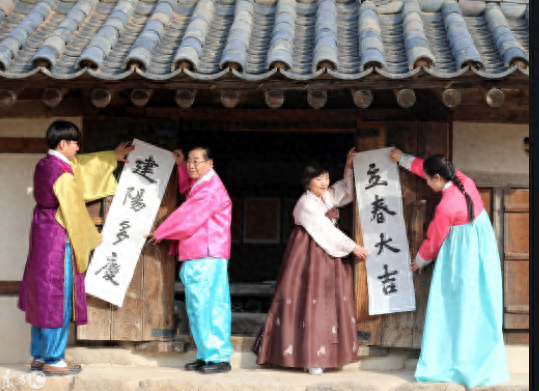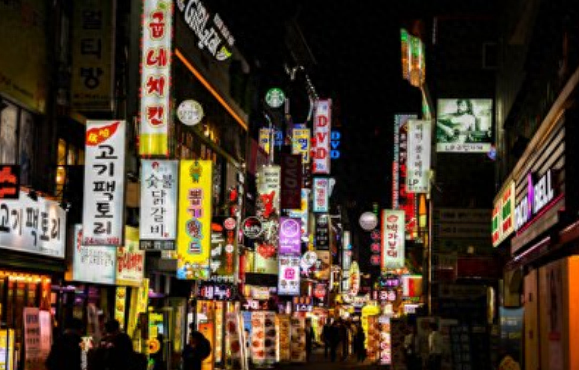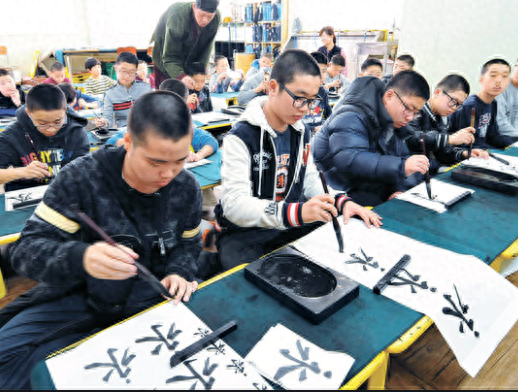South Korea has a long history of using Chinese characters. As early as the Warring States Period in the 2nd and 3rd centuries BC, Chinese characters were introduced to North Korea and went through three stages: borrowing Chinese characters to mark, mixing Chinese proverbs, and mixing Korean and Chinese.
Although Chinese characters were first created by the Chinese, as a highly prosperous carrier of Chinese culture, they have spread widely and have far-reaching influence.

Starting from the Qin and Han Dynasties, and even beginning to take shape in the Tang Dynasty, the "Chinese Character Cultural Circle" in the modern sense was gradually established after the Ming Dynasty, which had a huge impact on the languages of surrounding countries and regions. As linguist Wang Li said: "Since the Qin and Han dynasties, due to the advancement of Han culture, Chinese has gradually been introduced into foreign countries, especially Japan, North Korea and Vietnam. Japanese, Korean and Vietnamese have all accepted Chinese A huge influence, absorbing a large number of words into Chinese and becoming an integral part of their own vocabulary "
South Korea and China are separated by a strip of water. Due to their geographical advantages, Chinese was first introduced to the Korean Peninsula, but it did not become popular until a few centuries AD.
At that time, the Korean language on the Korean Peninsula did not have a corresponding writing system. With the highly developed Chinese culture, Chinese characters became the official writing system of the Korean Peninsula. However, as a tool of the ruling class, only the aristocracy could learn it. Most ordinary civilians could learn it. For illiterate people. Therefore, for a long time, official official documents and literati's creations were all written in Chinese characters. For example, in the history book "Three Kingdoms" of South Korea and North Korea (the Three Kingdoms refers to Goguryeo, Baekje, and Silla), there is "Changguo". Send your children to serve as imperial guards, and then go to school and recite "This minister and others are the helpers." Choi Chi-won, a poet of the Silla period, wrote in "Autumn Night Rain": "The autumn wind only sings bitterly, and there are few friends in the world who are raining in front of the window at midnight." , Deng Qian Wanli Xin. "It can be seen that the use of Chinese characters in official literary styles and poems at that time was very proficient.

In order to fundamentally solve the problem of the inconsistency of language and characters, popularize public education and standardize the pronunciation of Chinese characters. In 1443, King Sejong compiled "Hunminjeongeum", which was intended to teach the people the correct pronunciation of characters. As he wrote in the preface, "The pronunciation of the country is different from that of China and does not communicate with the written language. Therefore, there are many stupid people who want to speak but are unable to express their feelings. I feel sorry for this and have newly made twenty-eight characters in order to make it more popular. It is easy for everyone to learn and easy to use every day. "The original "Hunmin Zhengyin" has 11 vowels, 17 consonants, and a total of 28 letters. These 28 letters are combined into syllables to spell Chinese characters. Writing in this way is called "proverb". After continuous development, it became today's Korean language.
After the promulgation of "Hunminzhengeum", it not only solved the problem of Chinese characters not being able to represent the pronunciation of characters, but also standardized the pronunciation and writing of Chinese characters. It also broke the aristocracy's monopoly on knowledge and reduced the number of illiterates. However, although the creation of proverbs was convenient for ordinary people to learn, the upper-class scholar-officials were very resistant to it. They believed that proverbs were vulgar texts of the lower class, while Chinese creations were elegant texts. The coexistence of refined texts and vulgar texts lasted for a long time.

At the end of the 19th century, South Korea entered a period of enlightenment. Yu Jijun, a representative figure of the Enlightenment School, proposed the idea of mixing Korean and Chinese, and used Korean and Chinese alternately in the writing process. In the book "Journey to the West" he wrote, the issue of mixed Korean and Chinese was used, which caused a sensation after its publication. Later, the book also became a model for Korean and Chinese styles of writing. The pure Chinese style began to transform into a mixed style of Korean and Chinese. Transition, becoming a common style on the Korean Peninsula. Korean and Chinese mixed styles use Chinese characters and words, some of which come from China, and some of which were produced during the Japanese colonial period.
After World War II, China's national power gradually declined, and Chinese characters also lost their influence. At this time, after South Korea got rid of colonial rule, nationalist sentiment was on the rise. Some scholars began to advocate the abolition of Chinese characters and the implementation of a "Korean-only" policy. In 1948, the "Korean-only Act" was enacted to prohibit the public use of Chinese characters. After 1970, Chinese characters were also eliminated from Korean primary and secondary school textbooks, and the Chinese character style gradually disappeared, and pure Korean style began to replace it.
However, since the reform and opening up in 1978, with the continuous development of globalization and China's economy, countries in the Chinese character cultural circle such as South Korea have begun to pay attention to Chinese characters and advocated the restoration of Chinese characters and Chinese language courses.

In 2005, the South Korean government officially announced the full restoration of the use of Chinese characters and Chinese character marks that had disappeared for many years in all areas such as traffic signs and official documents to adapt to the needs of the global trend of the times. In 2009, 20 former South Korean government officials signed a letter calling on the government to strengthen Chinese character education.
In 2019, the Korean Ministry of Education stipulated that Korean primary school textbooks for fifth to sixth grade will be marked with Chinese characters and their pronunciation and meaning. Although the abolition of Chinese characters has brought convenience to Korean literacy, many Korean history books and ancient books are written in Chinese characters, so that many younger generations cannot even read their country's history books. As a Japanese scholar said: "We are smarter than Koreans. Abolition of Chinese characters is actually abandoning the culture contained in this character and denying our own history. Koreans regret it now, but it may be too late."
Articles are uploaded by users and are for non-commercial browsing only. Posted by: Lomu, please indicate the source: https://www.daogebangong.com/en/articles/detail/han-guo-wei-he-bu-zai-shi-yong-han-zi.html

 支付宝扫一扫
支付宝扫一扫 
评论列表(196条)
测试